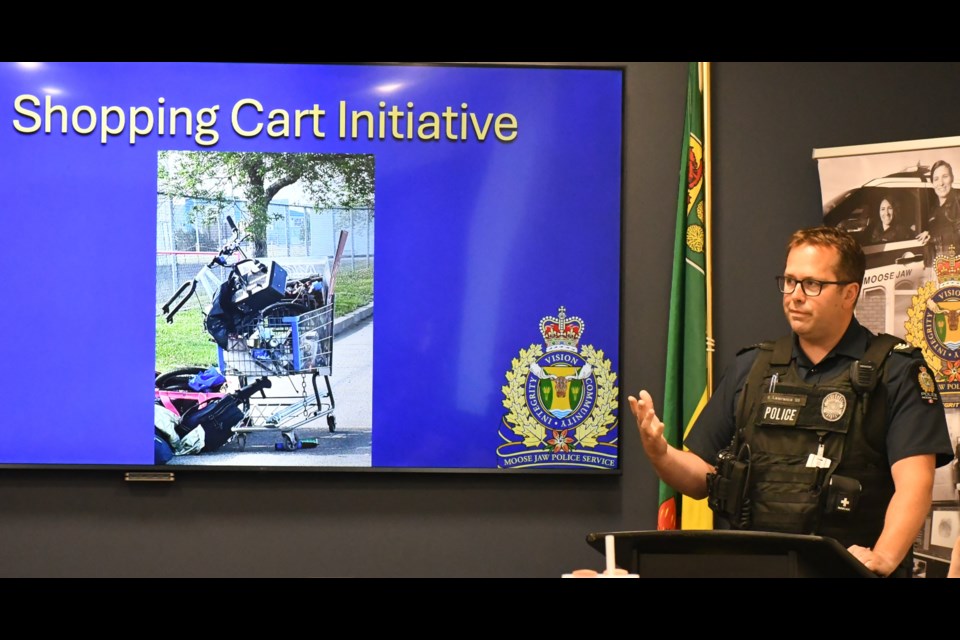The shopping cart has become a useful transportation method for low-income residents and would-be thieves, but police have begun working with retailers to ensure the four-wheelers can be easily retrieved.
Police have noticed an uptick in abandoned shopping carts throughout the community, whether on streets, in parks, the river or in alleys, Sgt. Ryan Lawrence said during the July 10 board of police commissioners’ meeting.
After recovering these push-trolleys, officers are finding stolen property like copper wire, alcohol, bike parts, bottles, knives, weapons and garbage.
Since shopping carts become stolen property after people remove them from a store’s property, the strategic services unit has created a new initiative to deter people from taking the merchandise carriers, Lawrence said.
Officers have spoken with all businesses that use shopping carts about the initiative and have convinced them to sign a document saying they do not lend or give out their carts for purposes other than shopping, he continued. This eliminates any excuses people may have about why they possess a cart away from the store.
“So it gives us the authority with the document to seize the shopping cart. And we have agreements with the store owners, where they’ll come and get them, or the Commissionaires if it’s after hours … ,” Lawrence said.
One business owner told police that people had taken nearly 60 shopping carts from his property, while replacing them is expensive since each costs $250 — or roughly $15,000 in total.
Besides recovering and returning this property to businesses, police can also prevent people from using the devices to transport stolen goods acquired through petty thefts, said Lawrence. Furthermore, recovering the carts enhances safety, as police have begun receiving reports of carts pushed into the middle of Thatcher Drive.
The sergeant added that people can use wagons to transport their property but cannot take businesses’ property to do the same.
Chief Rick Bourassa explained that the agency subscribes to the “broken windows theory,” which argues that visible signs of crime, anti-social behaviour and civil disorder create an urban environment that encourages further crime and disorder, including serious crimes.
“If we deal with those small little things, we can actually have a pretty good impact on crime reduction. If we don’t deal with the small things, they will grow up into big things,” he said, noting the elimination of graffiti also helps reduce crime.
Commissioner Clive Tolley recalled seeing some shopping carts at the new SARCAN Depot on Highland Road and thought they would become a more familiar sight, especially since the people who use them don’t return them to their rightful home.
Tolley added that it could be beneficial for the police to create a relationship with SARCAN to address this issue.
Some retailers send their employees with trucks to pick up the carts wherever they’ve been left, and while many are frustrated with the situation, they are pleased with the new initiative, said Lawrence.
Meanwhile, police have spoken with the Crown prosecutor about actions they can take against people in possession of carts, he continued. While warnings or charges can be warranted, the goal is to change people’s behaviour and stop them from taking the devices.
The public sometimes believes that police always lay charges for everything, but that’s incorrect since laying charges is one of the last things officers do, said Bourassa. Instead, the agency prefers — if possible — to give warnings or see people sent through alternative measures, which focuses more on restitution and changing behaviour.
“We just won’t want it to get unmanageable, so we’re trying to get it at the start here,” agreed Lawrence.




